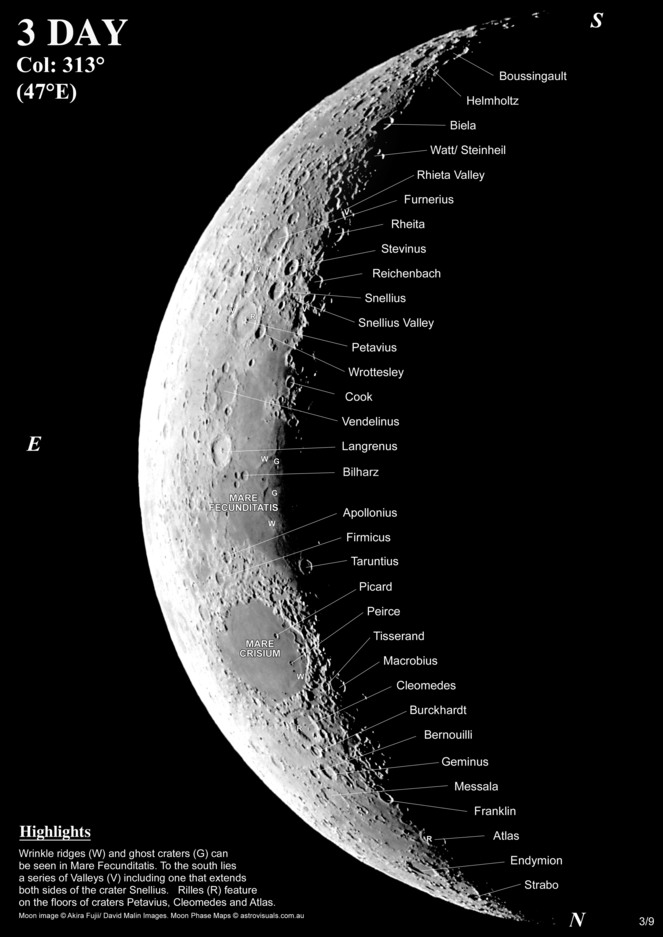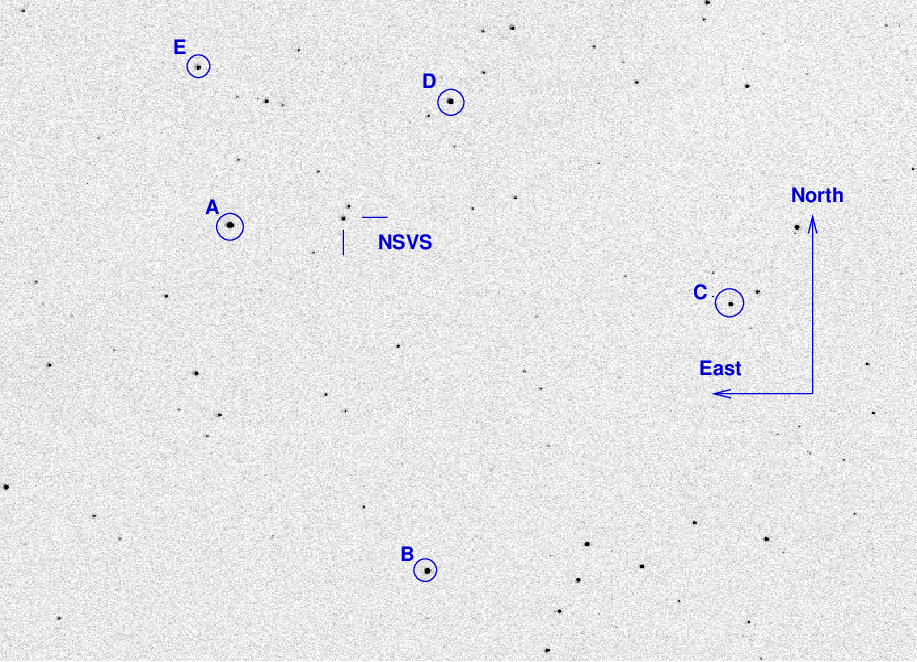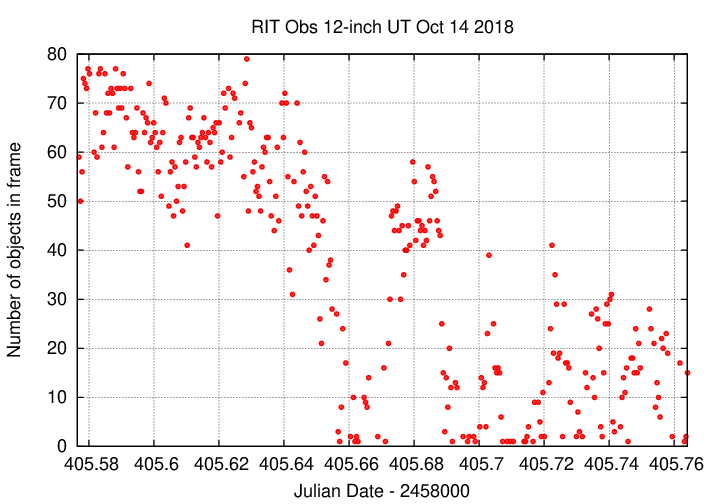
Chart of the 3-day moon courtesy of Derekscope's Moon page
On the night of Oct 13/14, 2018, two events took place at the RIT Observatory. First, from 7-9 PM, we invited members of the Rochester community to look through our telescopes. After that, Jen Connelly and capstone student Kain McCall observed the RR Lyr star NSVS 11726192 for six hours.
Thanks very much to our Observatory volunteers: Jennifer Connelly, Tracy Davis, Jessica Chellino, Christina Magagnoli, Roger Easton, Shaelyn Shadwell, Evan Muskopf, Kevin Cooke, Marko Ristic, and one additional student whose name I have shamefully forgotten (send me E-mail to remind me, please!)
It was a cold and cloudy day, with temperatures in the fifties, dropping to the forties after nightfall; only as the Sun was setting did clear patches appear. Therefore, we welcomed only a small number of visitors: perhaps 15 to 20 people over the course of the event.
Fortunately, we were able to show them a very nice view of the 3-day-old Moon -- very much like that below. We also provided views of Saturn and the Ring Nebula.

Chart of the 3-day moon courtesy of
Derekscope's Moon page
The run was cut short by clouds (again), but does show that the star reached a maximum near the end of the run. This will allow us to figure out when the maximum of the light curve will occur in the future.
The main setup was:
Notes from the night:
This RR Lyr variable star has been been studied previously, but not very much:
The object is located at
RA = 22 12 28.90 Dec = +08:03:35.2
A chart of the field is shown below. The size of the chart is about 22 by 18 arcminutes. This chart isn't the same as the one shown on Sep 29, 2018; the field covered this evening was slightly farther South. I've chosen new stars "B" and "C", but the stars "A", "D", and "E" are the same as shown earlier.

I've marked the location of several comparison stars, which also appear in light curves below.
star UCAC4 B V ---------------------------------------------------- A UCAC4 491-148200 11.857 10.752 B UCAC4 490-142047 11.906 10.872 C UCAC4 490-142013 12.875 12.094 ----------------------------------------------------
We ran the camera at -20 C. Nothing out of the ordinary.

The sky value shows clouds moving in starting about halfway through the run.

The number of objects detected -- I required 20 objects for an image to be included in the ensemble.

The FWHM was appears to drop when the clouds come, but that's simply due to a much lower signal.

Last modified 10/15/2018 by MWR.